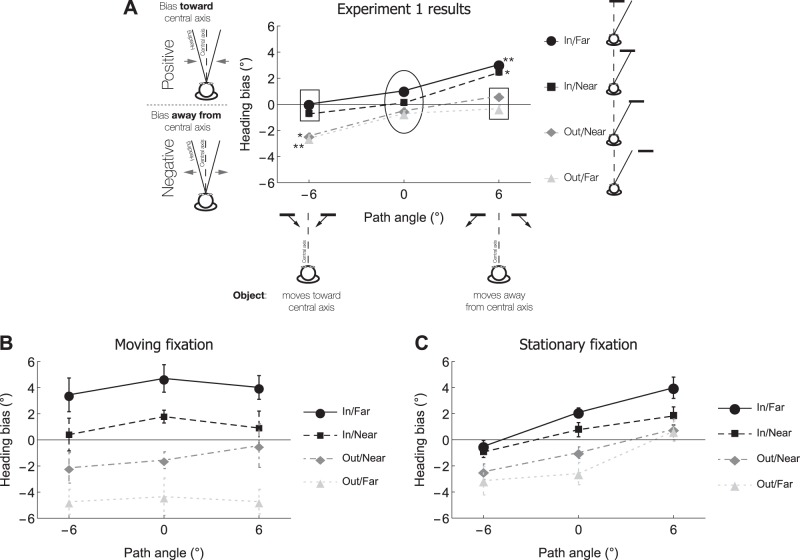Fig. 5.
Heading bias from Experiment 1 as a function of the path angle of the moving object. Positive bias indicates that errors in heading judgments were toward the central axis, and negative bias indicates that errors were away toward the periphery. Positive path angles signify that the object moved toward the periphery, negative path angles signify object movement toward the central axis, and a zero path angle signifies movement along a parallel trajectory with respect to the observer. The curves in each plot indicate performance for different starting object positions. The center screen bias has been removed. A: symbols within oval indicate conditions wherein the object moved parallel to the observer, symbols within the rectangular boxes indicate conditions wherein the object started far from the observer's future path and moved away, symbols labeled with a single asterisk indicate conditions wherein the object crossed the future path, and markers labeled with a double asterisk indicate conditions wherein the object approached, but did not cross, the future path. B: heading bias from the control experiment in which subjects maintained gaze on a moving fixation point that replaced the moving object (Moving Fixation condition). C: heading bias from the control experiment in which subjects maintained gaze on a centrally positioned fixation point that was stationary in the observer's frame of reference (Stationary Fixation condition).

